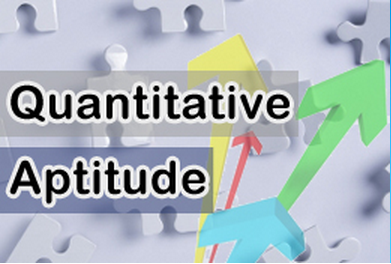Hello Aspirants. Welcome to Online Quantitative Aptitude section in AffairsCloud.com. Here we are creating question sample From all topics , which are Important for upcoming IBPS and RRB exams. We have included Some questions that are repeatedly asked in exams.
(1-5) Study the following table and answer the questions:

- What percent of the total population of West Bengal, Odisha and Madhya Pradesh together is illiterate? (Rounded off to nearest integer)
A. 28
B. 34
C. 29
D. 31D. 31 - Approximately, by what percent is the urban population of Maharashtra less than its rural population?
A. 33
B. 39
C. 49
D. 45B. 39 - Urban population of Maharashtra and Odisha together is what percent of the total population of these two states? (Rounded off to two digits after decimal)
A. 32.49
B. 35.59
C. 38.55
D. 32.85B. 35.59 - What is the total number of graduates from Odisha West Bengal and Maharashtra together?
A. 1509695
B. 1529559
C. 1643780
D. 1619455C. 1643780 - What is the difference between number of graduates from Madhya Pradesh and Uttarakhand?
A. 388185
B. 366340
C. 349185
D. 382340C. 349185 - In an election contested by two, the loser loses by a margin of 20% of the total votes polled, which is equivalent to 20,000 votes. If only 50% of the total eligible people cast their votes, then how many total people were eligible for casting their votes?
A. 4,00,000
B. 50,000
C. 1,00,000
D. 2,00,000D. 2,00,000
Explanation:
total people = x
votes polled = 50/100 * x
20/100 * 50/100 * x = 20,000
x = 2,00,000 - The income of a property dealer remains unchanged though the rate of commission is increased from 8% to 10%. The percentage change in the value of business is
A. 25%
B. 20%
C. 15%
D. 28%B. 20%
Explanation:
Let initial value of business = Rs 100
income from commission = 8/100 % 100 = Rs 8
Now income remain unchanged, but rate changed to 10%. Let new value of business = Rs x
then, 10/100 * x = 8, x = Rs 80
% change = (100-80)/100 * 100 = 20% - A fruit vendor buys certain numbers of apples at 20 per Rs 15 and twice this number of apples at 30 per Rs 20. He sells all the apples at 24 per Rs 18. At most what discount percentage can he offer so that he does not has a loss?
A. 8%
B. 7.41%
C. 7.14%
D. 5%B. 7.41%
Explanation:
take lcm(20,30,24) = 120
let 120 apples at 20 for Rs 15, then cost of 120 apples is 90.
now twice the number at 30 for Rs 20, so cost of 240 apples is 160.
Total cost of 120+240(360) apples is 90+160 = 250.
he sells 360 apples at 24 for Rs 18, therefore, S.P of 360 is 270.
Now if he wants no loss, then at most he can sell 360 apples at 250(at which he bought)
so d% = 20/270 * 100 - The marked price of an article is 30% higher than the cost price. It is sold after allowing 10% discount to the customers, then the gain percent is
A. 16 2/3%
B. 17%
C. 12 1/2%
D. 15%B. 17%
Explanation:
Use M.P. = (100+p%)/(100-d%) * C.P.
130/100 * C.P. = (100+p%)/(100-10%) * C.P. - A solution contains alcohol, acid and water in the ratio 1 : 2 : 3, while another solution contains these in the ratio 2 : 3 : 4. If both the solutions are mixed in the ratio 5 : 9, then the percentage of acid in the final solution is
A) 33 1/3 %
B) 33%
C) 50%
D) 28%A) 33 1/3 %
Explanation:
we have to find % of acid.
In first sol, acid : (alc+water) = 2 : (1+3) = 1 : 2
In second sol, acid : (alc+water) = 3 : (2+4) = 1 : 2
final ratio of acid : (alc+water) = (1/3 * 5 + 1/3 * 9) : (2/3 * 5 + 2/3 * 9) = 1 : 2
% of acid = 1/3 * 100
AffairsCloud Recommends Oliveboard Mock Test
AffairsCloud Ebook - Support Us to Grow
Govt Jobs by Category
Bank Jobs Notification


